Nancy F. Castaldo's Blog, page 9
October 29, 2019
Cover Reveal! THE FARM THAT FEEDS US
I am so very excited to share with you the cover of my upcoming picture book --
THE FARM THAT FEEDS US: Follow A Family Farm Through All Four Seasons
Younger readers who are not quite ready for my older award-winning THE STORY OF SEEDS will discover how farmers grow the food that sustains us. They'll find out where our food comes from, the role of farms, and what it's like to be a farmer.
Ginnie Hsu has done a fantastic job of capturing life on a farm in her adorable illustrations. I know you'll love her illustrations of heritage sheep and other livestock as much as I do. Like me, Ginnie's work is often inspired by everyday life and nature. And she "loves mixing new and traditional media to create magic."
THE FARM THAT FEEDS US is now available for preorder from your favorite bookstore. Shop indie! It's published by Quarto under the imprint words & pictures.
Drumroll please...
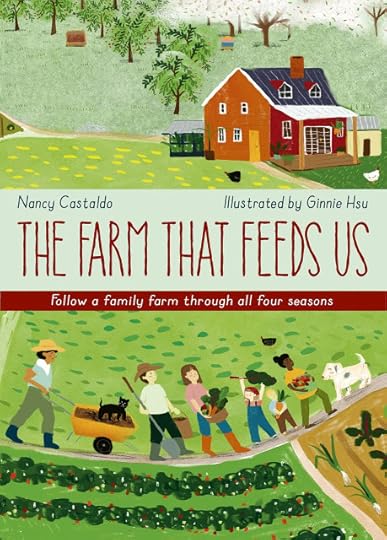
I can't wait to share this with you this spring!
THE FARM THAT FEEDS US: Follow A Family Farm Through All Four Seasons
Younger readers who are not quite ready for my older award-winning THE STORY OF SEEDS will discover how farmers grow the food that sustains us. They'll find out where our food comes from, the role of farms, and what it's like to be a farmer.
Ginnie Hsu has done a fantastic job of capturing life on a farm in her adorable illustrations. I know you'll love her illustrations of heritage sheep and other livestock as much as I do. Like me, Ginnie's work is often inspired by everyday life and nature. And she "loves mixing new and traditional media to create magic."
THE FARM THAT FEEDS US is now available for preorder from your favorite bookstore. Shop indie! It's published by Quarto under the imprint words & pictures.
Drumroll please...

I can't wait to share this with you this spring!
Published on October 29, 2019 03:00
October 23, 2019
Researching STEM Kidlit - Welcome Guest Blogger Anita Silvey
The problem of the unreliable narrator – in primary sources ~~~For the past six years, I have been working on a nonfiction trilogy for National Geographic about the “ape ladies” or trimates. With breakthrough field research, Jane Goodall (Untamed), Birute Galdikas (Undaunted) and Dian Fossey (Unforgotten) radically altered our understanding of our closest biological cousins -- the chimpanzees, orangutans, and mountain gorillas who share 97%+ of our DNA.
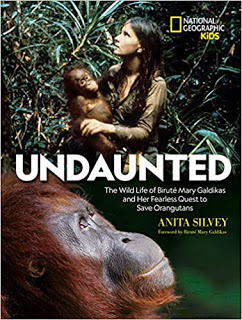
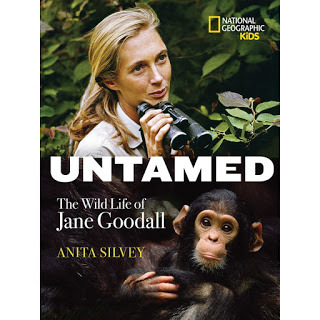
From the beginning, when I was asked by editor Kate Hale if I would be interested in a book on Jane Goodall, the project had everything I could desire – lots of primary sources, their own first-hand accounts, videos of them working in the field, people to interview who knew them, and foundations or the subjects themselves who could review the manuscript for any inaccuracies and misrepresentations. I should one day adorn my car with a bumper sticker “I brake for Primary Sources!” Then a year ago, I began researching the last of the three women for a biography of Dian Fossey, to be published in 2020. Within a couple of months, I realized I had a massive problem on my hands. After Dian Fossey was tragically murdered in her research camp, many who knew her provided interviews or wrote their own accounts of the incidents. I first picked up John Fowler’s A Forest in the Clouds, a fascinating adult biography. Then I read and reread Gorillas in the Mist, Dian’s account of her own journey. At that point, I realized I had a terrible problem in terms of telling the truth about Dian’s life. Like many creative people, Dian loved to tell a good story. But in her case, much of what she conveyed probably did not happen as she wrote or told it. We love to talk about the unreliable narrators in fiction, like Holden Caufield in The Catcher in the Rye or Nick and Amy in Gone Girl. For fiction, such an untruth teller can provide narrative tension, because the reader slowly begins to realize they cannot trust the point of view of the protagonist. But I am creating nonfiction; Dian’s willingness to bend the truth both in her book and in her letters led me into a research swamp, trying to check facts again and again.Some of the final decisions were easier than others. For instance, when Dian was forced to flee her first research station in DRC, she told so many versions of the story and changed the details so many times, that I realized I could only convey the basics, leaving out some of her more dramatic, and less verifiable, claims. But what about the morning when she met with Louis Leakey after his lecture in Louisville, Kentucky? He told her he would find money to finance her study of mountain gorillas. In this case, I had only her account of events. Fortunately, I had already written about the pivotal meetings of Jane Goodall and Birute Galdikas with Leakey. Dian’s version of what happened that day matched their recollections down to small details. So I felt confident that I could rely on what she had said. Basically, I had to weigh everything she had said or written, understanding that I could not trust her own words.Every book presents its own challenges; I can only hope that I have done Dian justice while attempting to tell the truth and nothing but the truth. But the whole experience makes me think I should redo that bumper sticker: “I brake for Primary Sources! Please tell the truth.”
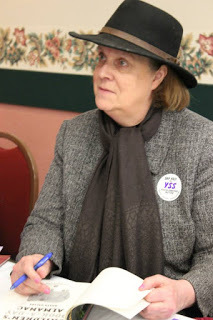
Former Editor of Horn Book Magazine and Publisher of Children’s Books at Houghton Mifflin, Anita Silvey launched the Scientists in the Field series for young readers. Currently teaching at Simmons University, she has been writing a trilogy about the Trimates -- Jane Goodall (Untamed), Birute Galdikas (Undaunted), and Dian Fossey (Unforgotten).
Watch for Anita's upcoming biography of Dian Fossey, UNFORGOTTEN!


From the beginning, when I was asked by editor Kate Hale if I would be interested in a book on Jane Goodall, the project had everything I could desire – lots of primary sources, their own first-hand accounts, videos of them working in the field, people to interview who knew them, and foundations or the subjects themselves who could review the manuscript for any inaccuracies and misrepresentations. I should one day adorn my car with a bumper sticker “I brake for Primary Sources!” Then a year ago, I began researching the last of the three women for a biography of Dian Fossey, to be published in 2020. Within a couple of months, I realized I had a massive problem on my hands. After Dian Fossey was tragically murdered in her research camp, many who knew her provided interviews or wrote their own accounts of the incidents. I first picked up John Fowler’s A Forest in the Clouds, a fascinating adult biography. Then I read and reread Gorillas in the Mist, Dian’s account of her own journey. At that point, I realized I had a terrible problem in terms of telling the truth about Dian’s life. Like many creative people, Dian loved to tell a good story. But in her case, much of what she conveyed probably did not happen as she wrote or told it. We love to talk about the unreliable narrators in fiction, like Holden Caufield in The Catcher in the Rye or Nick and Amy in Gone Girl. For fiction, such an untruth teller can provide narrative tension, because the reader slowly begins to realize they cannot trust the point of view of the protagonist. But I am creating nonfiction; Dian’s willingness to bend the truth both in her book and in her letters led me into a research swamp, trying to check facts again and again.Some of the final decisions were easier than others. For instance, when Dian was forced to flee her first research station in DRC, she told so many versions of the story and changed the details so many times, that I realized I could only convey the basics, leaving out some of her more dramatic, and less verifiable, claims. But what about the morning when she met with Louis Leakey after his lecture in Louisville, Kentucky? He told her he would find money to finance her study of mountain gorillas. In this case, I had only her account of events. Fortunately, I had already written about the pivotal meetings of Jane Goodall and Birute Galdikas with Leakey. Dian’s version of what happened that day matched their recollections down to small details. So I felt confident that I could rely on what she had said. Basically, I had to weigh everything she had said or written, understanding that I could not trust her own words.Every book presents its own challenges; I can only hope that I have done Dian justice while attempting to tell the truth and nothing but the truth. But the whole experience makes me think I should redo that bumper sticker: “I brake for Primary Sources! Please tell the truth.”

Former Editor of Horn Book Magazine and Publisher of Children’s Books at Houghton Mifflin, Anita Silvey launched the Scientists in the Field series for young readers. Currently teaching at Simmons University, she has been writing a trilogy about the Trimates -- Jane Goodall (Untamed), Birute Galdikas (Undaunted), and Dian Fossey (Unforgotten).
Watch for Anita's upcoming biography of Dian Fossey, UNFORGOTTEN!
Published on October 23, 2019 02:00
October 2, 2019
Researching STEM Stories: Guest Blogger: Heidi E. Y. Stemple
This is what I knew about animals that stink: Great horned owls like to eat skunks because they have no sense of smell. That’s more of a bird fact (I know lots of those) than a fact about animals that stink, but it’s what I had. Then, suddenly, I had to write a whole book about stinking animals!!
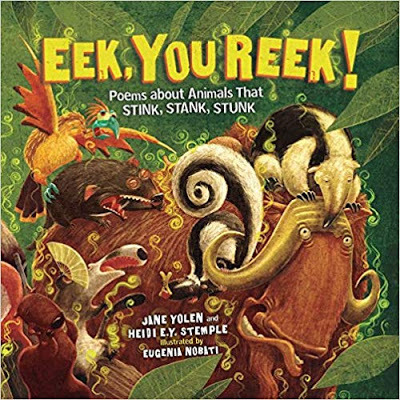
I tell kids in school visits that research is just a fancy word for getting to learn more about stuff that interests me. Often, it’s my favorite part of a project. I’d like to say that it’s always glamorous, I mean, for my book COUNTING BIRDS which is the history of the Audubon Christmas Bird Count, part of my research was my time spent actually participating in the Count. But truthfully, much research involves a lot of sitting for long hours with my head in a book holding a highlighter and pack of post-its, or staring at a computer screen, taking copious notes. Recently in a hybrid project—part fiction, part non-fiction--I filled an entire bin with printed material and books about spies having researched gadgets, codes, double agents, dead drops, and the like. I didn’t get to do any actual spy-work at all.
But, in my new book, co-authored by my mom and writing partner Jane Yolen, research took on an interesting role—it changed my mind about a project I wasn’t sure was a viable book, even after signing the contracts. EEK, YOU REEK! is the book about stinky animals. Every project we take on together has a different origin. This one began because my mom thought it was a fun idea. I did not. I thought it was too narrow. Remember, the sum total of what I knew about stinky animals was a bird fact. This project, a poetry collection, just didn’t seem like something that had enough meat on its bones to be interesting. So, I said, “when it sells, I’ll write my half of the poems.” I figured that time would be never. Luckily, I was wrong.
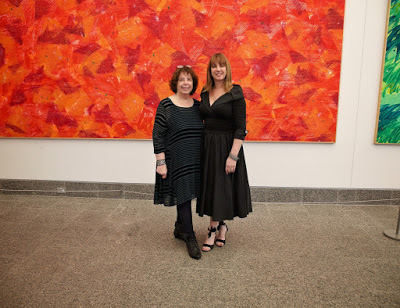
So, I found myself on a tight deadline needing to finish the book. Tick tock. I still thought the subject was too narrow. We had an opening poem and poems about a skunk (and the great horned owl, of course), ferret, wolverine, and a beetle. It needed variety. What else stank? Sometimes Google is a writer’s best friend. I started with “animals that stink” and I created a list. I figured we needed more than mammals. Did you know there is a stink bird? I didn’t. But, there it was—the Hoatzin. And a stink turtle. Several bugs, and anteater, and the Tasmanian devil stinks, too. I needed not only different types of animals, but also sizes. The musk ox! Once I had a list, I needed to make sure there was a variety of reasons why the animals were odorous—to attract a mate, for protection, because of digestion… Suddenly the book started to take shape. All from a long couple days of research. From there it was a deep dive into each stinker. I like to take notes of every odd detail so I have a lot of material from which to choose when distilling it into what I’m writing. Poems are especially fun since I may take 6 pages of notes to create a 25-word poem. So, in the case of EEK YOU REEK, there was both science research and word research. Much of what we didn’t use in poems, wound up in the backmatter.
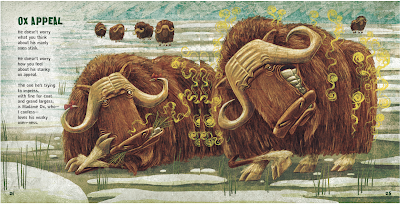
I love this book. And, it really was through this research that a project I didn’t really believe in became something really fun.
EEK, YOU REEK released yesterday and is now on bookstore shelves.
Here’s a sneak peek:
STINKBIRD
In flies the hoatzinfor a crash landing,not at all graceful—flying or standing.
Blue face and wing claws,Mohawk-like crest,but what makes them odd,is how they digest.
More bovine than bird,eating leaves by the ton,they chew on their cud while they laze in the sun.
While supper ferments,a stench fills the air.Only the stinkbirdsdon’t seem to care.
©2019 Heidi E.Y. Stemple from EEK, YOU REEK! Poems About Animals That Stink, Stank, Stunk by Jane Yolen and Heidi E.Y. Stemple
Find out more about Heidi and her books at www.HeidiEYStemple.com
--------------------------------------------------------------------------------------------------------------------------
Nancy Castaldo has been writing about the planet for over 20 years. Learn more about her award-winning books at http://www.nancycastaldo.com
DK LifeStories ADA LOVELACE is now available at your local bookstore!
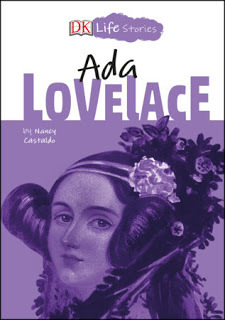
Published on October 02, 2019 03:30
April 5, 2019
Conquering Night Terrors with Hope and Action
Sometimes I wake up in the middle of the night from a sound or temperature change and my head gets filled with stuff that I can't shake. Things that I can't do much about at 2 am. One night I woke up to silence. I'm not sure what woke me up, but the lack of sound was deafening. I had just returned from Arizona where I woke to the wonderful sounds of coyotes outside my window. The silence reminded me of the coyotes I used to hear at night at my own house before my neighbor had them trapped and killed. Thoughts of those coyotes created a hurricane in my head. But these nighttime thoughts could be about anything. I have them when I think of the people I met in Flint who still don't have clean water. We all get these thoughts at times.
So, how do we conquer them when they surround us in the dark of night, or whenever they hit us? I combat them with the thoughts of all the people in the world who are making a difference. The ones who give me hope that we can work together to make a change.
That's why I wrote BACK FROM THE BRINK. I wanted to share stories of hope with readers who share the same fears I have about our environment. I wanted them to know about the people who came before us and saved whooping cranes from being hunted for hats and the people at work today who are saving California condors. Those stories are the ones that help me fall back to sleep at night. They encourage me. They give me hope that we can all make a difference.
I am so appreciative of the Nature Generation for placing BACK FROM THE BRINK on their shortlist for the Green Earth Book Award. Thank you. I hope it helps bring hope to more readers.
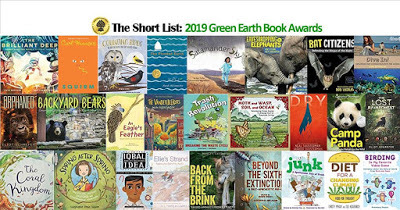
So, how do we conquer them when they surround us in the dark of night, or whenever they hit us? I combat them with the thoughts of all the people in the world who are making a difference. The ones who give me hope that we can work together to make a change.
That's why I wrote BACK FROM THE BRINK. I wanted to share stories of hope with readers who share the same fears I have about our environment. I wanted them to know about the people who came before us and saved whooping cranes from being hunted for hats and the people at work today who are saving California condors. Those stories are the ones that help me fall back to sleep at night. They encourage me. They give me hope that we can all make a difference.
I am so appreciative of the Nature Generation for placing BACK FROM THE BRINK on their shortlist for the Green Earth Book Award. Thank you. I hope it helps bring hope to more readers.

Published on April 05, 2019 06:25
March 20, 2019
Eating Bugs to Combat Climate Change? -- Interview with Christy Mihaly and Sue Heavenrich
I'm so excited today to post this interview with two authors who have crafted an important book about food, hunger, and climate change/action. Christy Mihaly and Sue Heavenrich wrote Diet for a Changing Climate.
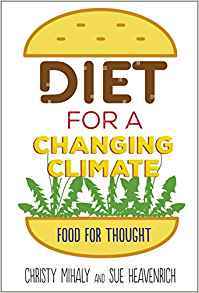
Thanks, Christy and Sue for taking the time to answer some questions about this unique book about climate action. Let's dive right in.
Diet for a Changing Climate offers a very unique look at climate action. What was the spark for writing about this topic?
Long ago (in 2014), two writers (who happened to be critique partners) each independently had the same idea: “I’d like to write a book for kids … about eating insects!”
Sue ’s inspiration sprouted in her vegetable garden in upstate New York. While knocking Japanese beetles off her tender plants into a bucket of soapy water, she pondered whether that pile of insect protein might be edible. For humans. Sue’s mental gears kicked into motion and she began scribbling ideas for a children’s “field guide to eating insects.”
Meanwhile, over in Vermont, Chris was interviewing a local environmental activist for a magazine article. This young woman was an entomophagy advocate who hosted public bug-eating dinners, at which she emphasized the environmental and nutritional benefits, as well as the tastiness, of eating insects. When Chris researched the topic and learned about the UN’s longstanding advocacy of entomophagy, she was seriously intrigued.
That summer, Sue and Chris attended a nonfiction conference together. Chris told Sue she’d submitted a proposal, “Entomophagy ABC’s”… which received a tepid reception. “No way!” Sue said. “I’m working on an entomophagy book.” We decided to collaborate. We developed a joint proposal and submitted it for a critique at a conference a year later. The editor passed on the project but was encouraging and offered helpful suggestions. To celebrate, we (Sue and Chris, not the editor) split a pack of—you guessed it—roasted crickets!
Well, that's an interesting way to celebrate. What happened next?
After more revisions, Chris submitted our new-and-improved proposal at a 2016 conference. The third time was the charm! Domenica DiPiazza of Lerner/Twenty-First Century Books loved our idea. But we needed to broaden our scope beyond entomophagy.
We wanted to write about climate change, and to excite young readers about climate-positive actions they could take. So, we expanded the book to discuss how human food systems affect the climate, and how dietary changes could reduce carbon emissions. We decided to cover a range of dietary options, figuring most people are more open to eating weeds than munching insects.
What challenges did you face conducting the research for this book?
A major challenge was the recipes: putting our mouths where our writing was. Dandelions weren’t a big deal, but crickets and Japanese beetles took some devotion to the cause. The recipes required trial and error and reaching out to more experienced and creative chefs.
Some information was tough to find. We needed to develop reliable food safety guidelines, for instance, tips for safely eating weeds in a city. And because it’s a new field in the U.S., it was difficult to locate companies producing insects for human consumption.
In addition, eating any kind of animal can be a difficult subject. Sue, as an entomologist, has a deep appreciation of, and love for, insects. We spent a great deal of time discussing and researching humane ways to catch and kill bugs (freezing them is good).
The overall challenge was developing the deep understanding necessary to explain the relationships between food and climate change: making sure we had connected the dots correctly.
Did anything in your research surprise you?
We were surprised by how many people are already eating invasive species and insects. We had known there were scattered forward-thinking individuals out there but hadn’t realized the extent of entomophagy and invasivore Facebook groups, websites, associations, restaurants, courses, conventions, cooking events, and more.
We also were struck by the grave environmental and economic problems presented by invasive plant and animal species. And … how many invasive species and insects make for really good eating.
Yum. Do you have any words of wisdom for people who struggle with understanding human involvement with climate change?
Students around the world are planning a global day of action for March 15: a Climate Strike. Young people know that if our inaction continues, they will be faced with a climate disaster. It is scary to think that our actions have changed the global environment so drastically. Rather than just sigh and hope for the best, however, we encourage people to read good science. Look at the data on temperature rise. Study the graphs showing how much carbon has been added to the atmosphere since the Industrial Revolution, and compare that to carbon levels over Earth’s long history. And consider that a huge majority—nearly 97 percent—of scientists engaged in climate research agree that human activity is causing climate change.
Whether or not you’re convinced that humans have caused the crisis, don’t let uncertainty prevent you from taking steps to address the changing climate and make our world a better place to live.
Nice advice. Action is always better than inaction. What comes next for both of you ?
We enjoyed co-writing DFACC, and we’re discussing possible future collaborations (still Top Secret at this point). We’re also working to bring DFACC into schools.
Meanwhile, Chris recently completed a series of six books for an educational publisher dealing with political issues including climate change. She is working on a fun project for National Geographic Kids. And she has a few picture books in the pipeline—both nonfiction and fiction—including a poetic introduction to the First Amendment, Free for You and Me, scheduled for publication with Albert Whitman in the spring of 2020.
Sue just finished a couple of books for an educational publisher and is outlining some new projects. She has a nonfiction picture book, Thirteen Ways to Eat a Fly, scheduled for publication with Charlesbridge in the summer of 2020. Sue writes a bimonthly science column and volunteers as a citizen scientist, collecting data on native pollinators. She also helps coordinate her local SCBWI Shop Talk group.
Thank you both for sharing your book with us today. I'm sure this is one that will fascinate readers and boost a lot of discussions.
If you would like more information about this book, check out the publisher's page.

Thanks, Christy and Sue for taking the time to answer some questions about this unique book about climate action. Let's dive right in.
Diet for a Changing Climate offers a very unique look at climate action. What was the spark for writing about this topic?
Long ago (in 2014), two writers (who happened to be critique partners) each independently had the same idea: “I’d like to write a book for kids … about eating insects!”
Sue ’s inspiration sprouted in her vegetable garden in upstate New York. While knocking Japanese beetles off her tender plants into a bucket of soapy water, she pondered whether that pile of insect protein might be edible. For humans. Sue’s mental gears kicked into motion and she began scribbling ideas for a children’s “field guide to eating insects.”
Meanwhile, over in Vermont, Chris was interviewing a local environmental activist for a magazine article. This young woman was an entomophagy advocate who hosted public bug-eating dinners, at which she emphasized the environmental and nutritional benefits, as well as the tastiness, of eating insects. When Chris researched the topic and learned about the UN’s longstanding advocacy of entomophagy, she was seriously intrigued.
That summer, Sue and Chris attended a nonfiction conference together. Chris told Sue she’d submitted a proposal, “Entomophagy ABC’s”… which received a tepid reception. “No way!” Sue said. “I’m working on an entomophagy book.” We decided to collaborate. We developed a joint proposal and submitted it for a critique at a conference a year later. The editor passed on the project but was encouraging and offered helpful suggestions. To celebrate, we (Sue and Chris, not the editor) split a pack of—you guessed it—roasted crickets!
Well, that's an interesting way to celebrate. What happened next?
After more revisions, Chris submitted our new-and-improved proposal at a 2016 conference. The third time was the charm! Domenica DiPiazza of Lerner/Twenty-First Century Books loved our idea. But we needed to broaden our scope beyond entomophagy.
We wanted to write about climate change, and to excite young readers about climate-positive actions they could take. So, we expanded the book to discuss how human food systems affect the climate, and how dietary changes could reduce carbon emissions. We decided to cover a range of dietary options, figuring most people are more open to eating weeds than munching insects.
What challenges did you face conducting the research for this book?
A major challenge was the recipes: putting our mouths where our writing was. Dandelions weren’t a big deal, but crickets and Japanese beetles took some devotion to the cause. The recipes required trial and error and reaching out to more experienced and creative chefs.
Some information was tough to find. We needed to develop reliable food safety guidelines, for instance, tips for safely eating weeds in a city. And because it’s a new field in the U.S., it was difficult to locate companies producing insects for human consumption.
In addition, eating any kind of animal can be a difficult subject. Sue, as an entomologist, has a deep appreciation of, and love for, insects. We spent a great deal of time discussing and researching humane ways to catch and kill bugs (freezing them is good).
The overall challenge was developing the deep understanding necessary to explain the relationships between food and climate change: making sure we had connected the dots correctly.
Did anything in your research surprise you?
We were surprised by how many people are already eating invasive species and insects. We had known there were scattered forward-thinking individuals out there but hadn’t realized the extent of entomophagy and invasivore Facebook groups, websites, associations, restaurants, courses, conventions, cooking events, and more.
We also were struck by the grave environmental and economic problems presented by invasive plant and animal species. And … how many invasive species and insects make for really good eating.
Yum. Do you have any words of wisdom for people who struggle with understanding human involvement with climate change?
Students around the world are planning a global day of action for March 15: a Climate Strike. Young people know that if our inaction continues, they will be faced with a climate disaster. It is scary to think that our actions have changed the global environment so drastically. Rather than just sigh and hope for the best, however, we encourage people to read good science. Look at the data on temperature rise. Study the graphs showing how much carbon has been added to the atmosphere since the Industrial Revolution, and compare that to carbon levels over Earth’s long history. And consider that a huge majority—nearly 97 percent—of scientists engaged in climate research agree that human activity is causing climate change.
Whether or not you’re convinced that humans have caused the crisis, don’t let uncertainty prevent you from taking steps to address the changing climate and make our world a better place to live.
Nice advice. Action is always better than inaction. What comes next for both of you ?
We enjoyed co-writing DFACC, and we’re discussing possible future collaborations (still Top Secret at this point). We’re also working to bring DFACC into schools.
Meanwhile, Chris recently completed a series of six books for an educational publisher dealing with political issues including climate change. She is working on a fun project for National Geographic Kids. And she has a few picture books in the pipeline—both nonfiction and fiction—including a poetic introduction to the First Amendment, Free for You and Me, scheduled for publication with Albert Whitman in the spring of 2020.
Sue just finished a couple of books for an educational publisher and is outlining some new projects. She has a nonfiction picture book, Thirteen Ways to Eat a Fly, scheduled for publication with Charlesbridge in the summer of 2020. Sue writes a bimonthly science column and volunteers as a citizen scientist, collecting data on native pollinators. She also helps coordinate her local SCBWI Shop Talk group.
Thank you both for sharing your book with us today. I'm sure this is one that will fascinate readers and boost a lot of discussions.
If you would like more information about this book, check out the publisher's page.
Published on March 20, 2019 08:43
February 19, 2019
The Green Earth Book Award Long List Announced
I am so very happy to have BACK FROM THE BRINK on this very important list of books celebrating our planet. Congratulations to all the authors and illustrators on this list! And a shout out to all the publishers who are helping to get these important stories out into the world.
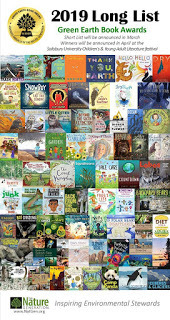
2019 Green Earth Book Award Long List Announced
PICTURE BOOKA Peaceful Garden, Lucy London, Christa Pierce (HarperCollins)An Eagle’s Feather, Minfong Ho, Frances Alvarez (The Cornell Lab Publishing Group)Change the World Before Bedtime 2ND EDITION, Mark Kimball Moulton, Josh Chalmers, Karen Good (Karen Good, Schiffer Publishing, Ltd.)Counting Birds, Heidi E. Y. Stemple, Clover Robin, (The Quarto Group/Seagrass Press)Errol’s Garden, Gillian Hibbs, Gillian Hibbs (Child’s Play International)Florette, Anna Walker (Houghton Mifflin Harcourt Books for Young Readers)Hello Hello, Brendon Wenzel (Chronicle Books)Iqbal and His Ingenious Idea, Elizabeth Suneby, Rebecca Green (Kids Can Press)Junk: A Spectacular Tale of Trash, Nicholas Day, Tom Disbury (Sleeping Bear Press)Little Otter Learns to Swim, Artie Knapp, Guy Hobbs (Ohio University Press)Lucy and the Dragonfly, Caroline Hamel, Lucie Papineau (Auzou)Molelo the Fire Elephant, Sylvia M. Medina and Krista Hill, Morgan Spicer (Green Kids Club, Inc.)Moth and Wasp, Soil and Ocean: Remembering Scientis Pu Zhelong’s Work for Sustainable Farming, Sigrid Schmalzer, Melanie Linden Chan (Tilbury House Publishers)Otis and Will Discover the Deep: The Record-Setting Dive of the Bathysphere, Barb Rosenstock, Katherine Roy (Little, Brown Books for Young Readers)Salamander Sky, Katy Farber, Meg Sodano (Green Writers Press)Snowboy and the Last Tree Standing, Hiawyn Oram, Birgitta Sif (Candlewick Press)Take Care, Madelyn Rosenberg, Giuliana Gregori (Albert Whitman & Company)Thank You Earth: A Love Letter to Our Planet, April Pulley Sayre, (Greenwillow Books/HarperCollins)The Brilliant Deep: Rebuilding the World’s Coral Reefs: The Story of Ken Nedimyer and the Coral Restoration Foundation, Kate Messner, Matthew Forsythe (Chronicle Books)The Coral Kingdom, Laura Knowles, Jennie Webber (The Quarto Group/words & pictures)The Forever Tree, Tereasa Surratt, Donna Lukas, Nicola Slater (Crown Books for Young Readers)The King of Bees, Lester L. Laminack, Jim LaMarche (Peachtree Publishers)The Night the Forest Came to Town, Charles Ghigna, Annie Wilkinson (Orca Book Publishers)The Digger and the Flower, Joseph Kuefler, Joseph Kuefler (Balzer + Bray/HarperCollins Children’s Books)
CHILDREN’S FICTIONBig Fish Dreams, Lori Fisher Peelen, Consie Powell (Curious Cat Books)Cinnamon Birds, Jeniferlee Pace Tucker (North Country Press)Elephant Secret, Eric Walters (Houghton Mifflin Harcourt Books for Young Readers)Ellie’s Strand: Exploring the Edge of the Pacific, M.L. Herring and Judith L. Li (Oregon State University Press)Squirm, Carl Hiaasen (Knopf Books for Young Readers/Random House)The Flooded Earth, Mardi McConnochie (Pajama Press)The Garden, Gwendolyn Hooks, Shirley Ng-Benitez (Lee & Low Books)The Garden of Wisdom: Earth Tales from the Middle East, Michael J. Caduto, Odelia Liphshiz, (Green Heart Books)The Lost Rainforest: Mez’s Magic, Eliot Schrefer (Katherine Tegen Books/Harper Collins)Vanderbeekers and the Hidden Garden, Karina Yan Glaser (Houghton Mifflin Harcourt Books for Young Readers)Willa of the Wood, Robert Beatty (Disney Hyperion)
CHILDREN’S NONFICTIONA Frog’s Life, Irene Kelly, Margherita Borin (Holiday House)A Seed is a Start, Melissa Stewart (National Geographic)Back from the Brink, Nancy Castaldo (Houghton Mifflin Harcourt Books for Young Readers)Backyard Bears: Conservation, Habitat Changes, and the Rise of Urban Wildlife (Scientists in the Field Series), Amy Cherrix (Houghton Mifflin Harcourt Books for Young Readers)Bat Citizens, Rob Laidlaw, Rob Laidlaw (Pajama Press)Camp Panda, Catherine Thimmesh (Houghton Mifflin Harcourt Books for Young Readers)Dig In! 12 Easy Gardening Projects Using Kitchen Scraps, Kari Cornell, Jennifer S. Larson (Millbrook Press)Dive In!: Exploring Our Connection with the Ocean, Ann Eriksson (Orca Book Publishers)Eavesdropping on Elephants: How Listening Helps Conservation, Patricia Newman (Millbrook Press)Explore the Salish Sea: A Nature Guide for Kids, Joseph K. Gaydos, Audrey DeLella Benedict (Little Bigfoot/Sasquatch Books)Girl Who Drew Butterflies, Joyce Sidman (Houghton Mifflin Harcourt Books for Young Readers)Going Wild: Helping Nature Thrive in Cities, Michelle Mulder (Orca Footprints/Orca Book Publishers)Icebergs & Glaciers, Seymour Simon (HarperCollins)If Polar Bears Disappeared, Lily Williams (Roaring Brook Press/Macmillan Childrens)Lobos: A Wolf Family Returns to the Wild, Brenda Peterson, Annie Marie Musselman (Little Bigfoot/Sasquatch Books)Nature’s Friend: The Gwen Frostic Story, Lindsey McDivitt, Eileen Ryan Ewen (Sleeping Bear Press)Ocean: A Visual Miscellany, Ricardo Henriques, André Letria (Chronicle Books)Orca Scientists, Kim Perez Valice, Andy Comins (Houghton Mifflin Harcourt Books for Young Readers)Perfectly Peculiar Plants, Chris Thorogood, Catell Ronca, (The Quarto Group/words & pictures)Raising a Forest, Thibaud Herem (Cicada Books)Robert Bateman: The Boy Who Painted Nature, Margriet Ruurs, Robert Bateman (Orca Book Publishers)Spring After Spring: How Rachel Carson Inspired the Environmental Movement, Stephanie Roth Sisson, (Roaring Brook Press/Macmillan Childrens)Squidtoon, Garfield Kwan, Dana Song (Andrews McMeel Publishing)Trash Revolution: Breaking the Waste Cycle, Erica Fyvie, Bill Slavin (Kids Can Press)Trash Vortex: How Plastic Pollution Is Choking the World’s Oceans, Danielle Smith-Llera (Compass Point Books/Capstone)Who Are You Calling Weird?, Marilyn Singer, Paul Daviz (The Quarto Group/words & pictures)
YOUNG ADULT FICTIONBeyond the Sixth Extinction: A Post-Apocalyptic Pop-Up, Shawn Sheehy, Jordi Solano (Candlewick Press)Countdown, Book One – The Skye Van Bloem Trilogy, Carol Fiore, Rebecca Lown (Flying Kea Press)Dry, Neal Shusterman and Jarrod Shusterman, Jay Shaw (Simon & Schuster Books for Young Readers)Orphaned, Eliot Schrefer (Scholastic)Ranger Nader & The Sunstruck Phantom, Kam Karen (Kam Karen & Wings Publishing)The Big Melt, Ned Tillman, Nan Barnes (South Branch Press)
YOUNG ADULT NONFICTIONBirding Is My Favorite Video Game, Rosemary Mosco, Rosemary Mosco (Andrews McMeel Publishing)Diet for a Changing Climate: Food for Thought, Christy Mihaly and Sue Heavenrich (Twenty-First Century Books)
Published on February 19, 2019 04:40
January 2, 2019
#MustReadIn2019
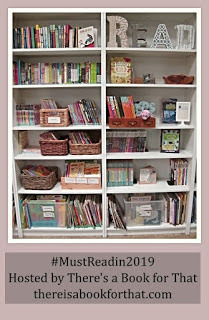
These are the books I am eager to read in 2019. There are so many more out there and many more I will be reading for book research on my ongoing projects, but these are either already on my shelf, started but not completed, or being released shortly.
I can't wait to dive into these fabulous authors.
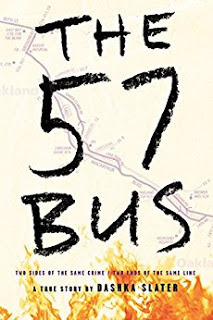
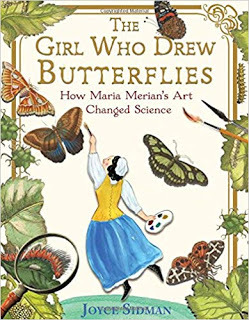
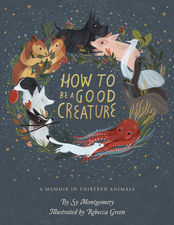
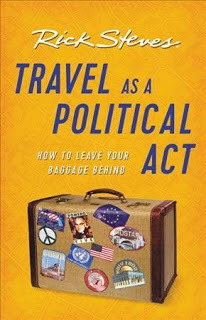
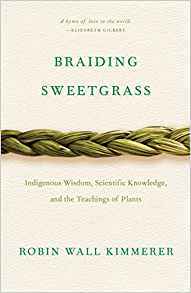
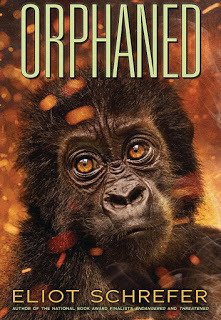
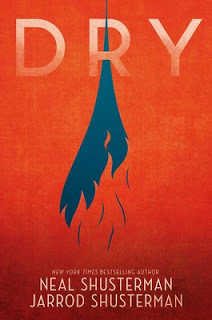
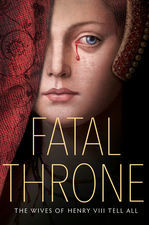
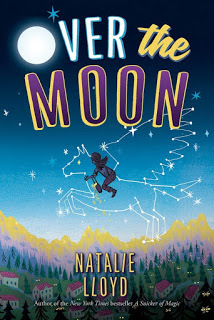
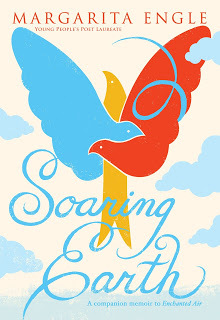
Published on January 02, 2019 07:00
November 23, 2018
5 Books to Celebrate National Maize Day!
"This holiday began as a small research project through which I intended—with my family—to commemorate the United States holiday of Thanksgiving through the viewpoint of the indigenous people." – Corinne Lightweaver
If you have read my book THE STORY OF SEEDS: FROM MENDEL'S GARDEN TO YOUR PLATE, AND HOW THERE'S MORE OF LESS TO EAT AROUND THE WORLD, then you might have observed that there are a number of photographs of maize (corn) throughout the book. There were actually more, but I realized in first pages that I had a heafty imbalance. The reason there are and would have been even more is that I am totally in agreement with the belief of Native Americans that maize is life.
From an ear of sweet corn on the cob to a tamale to cornbread to popcorn and field corn, corn is definitely something to celebrate! And, on this day after Thankgiving, a day many Native Americans recognize as a #DayofMourning, it is a day to reflect on the people native to our country, their history, their culture, and their struggles.
Here are some books to read today. Who needs #BlackFriday anyway? All that stuff will be here tomorrow.
1. We are Grateful by Traci Sopell
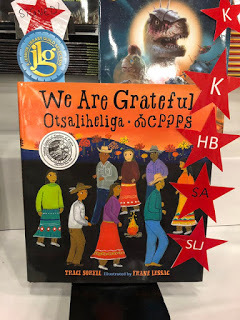
2. #NotYourPrincess : Voices of Native American Women
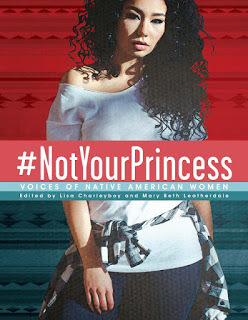
3. The Water Walker by Joanne Robertson
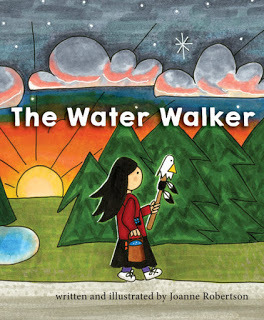
4. CORN by Gail Gibbons
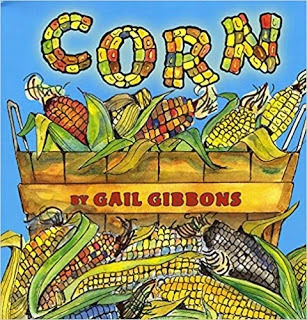
5. Corn is Maize by Aliki
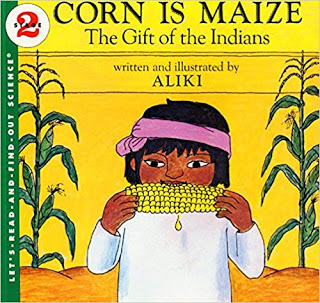
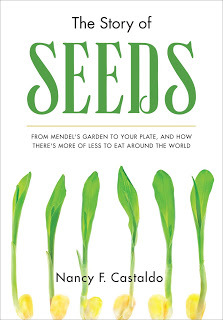 For more about my recent titles, including the Green Earth Book Award title THE STORY OF SEEDS, visit my website .
For more about my recent titles, including the Green Earth Book Award title THE STORY OF SEEDS, visit my website .
If you have read my book THE STORY OF SEEDS: FROM MENDEL'S GARDEN TO YOUR PLATE, AND HOW THERE'S MORE OF LESS TO EAT AROUND THE WORLD, then you might have observed that there are a number of photographs of maize (corn) throughout the book. There were actually more, but I realized in first pages that I had a heafty imbalance. The reason there are and would have been even more is that I am totally in agreement with the belief of Native Americans that maize is life.
From an ear of sweet corn on the cob to a tamale to cornbread to popcorn and field corn, corn is definitely something to celebrate! And, on this day after Thankgiving, a day many Native Americans recognize as a #DayofMourning, it is a day to reflect on the people native to our country, their history, their culture, and their struggles.
Here are some books to read today. Who needs #BlackFriday anyway? All that stuff will be here tomorrow.
1. We are Grateful by Traci Sopell

2. #NotYourPrincess : Voices of Native American Women

3. The Water Walker by Joanne Robertson

4. CORN by Gail Gibbons

5. Corn is Maize by Aliki

 For more about my recent titles, including the Green Earth Book Award title THE STORY OF SEEDS, visit my website .
For more about my recent titles, including the Green Earth Book Award title THE STORY OF SEEDS, visit my website .
Published on November 23, 2018 10:49
October 17, 2018
Save the Animals! Books About Endangered Animals & Conservation Efforts from SLJ
So very grateful to School Library Journal for this thoughtful inclusion of BACK FROM THE BRINK in their Saving Animals article.
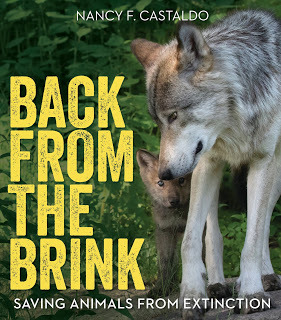
"Nancy Castaldo’s hope-filled Back from the Brink addresses successful stories of conservation. Whooping cranes, wolves, bald eagles, Galapagos tortoises, California condors, American alligators, and American bison have all been brought back from near extinction, reintroduced to their native habitat when possible, and now have a future where previously none seemed possible. Castaldo thoughtfully considers the various viewpoints involved from the controversial breeding program to save California condors, which still remain endangered and may never fly freely again, to the resurgence of American alligators who now face new threats from rising sea levels and invasive species. Castaldo’s work will give readers hope that they can make a difference while not shying away from the rough road ahead for many species."

"Nancy Castaldo’s hope-filled Back from the Brink addresses successful stories of conservation. Whooping cranes, wolves, bald eagles, Galapagos tortoises, California condors, American alligators, and American bison have all been brought back from near extinction, reintroduced to their native habitat when possible, and now have a future where previously none seemed possible. Castaldo thoughtfully considers the various viewpoints involved from the controversial breeding program to save California condors, which still remain endangered and may never fly freely again, to the resurgence of American alligators who now face new threats from rising sea levels and invasive species. Castaldo’s work will give readers hope that they can make a difference while not shying away from the rough road ahead for many species."
Published on October 17, 2018 05:11
September 22, 2018
Five Books About Wolves
I was deeply saddened to hear of wolf ambassador, Atka's death today. In honor of this beautiful wolf who taught us all so much, I'm sharing five books about wolves. Learn more about Atka and the Wolf Conservation Center's work at nywolf.org
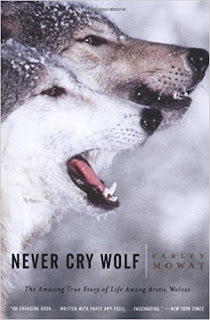
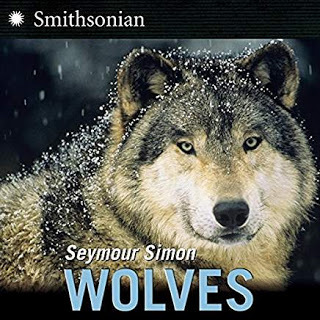
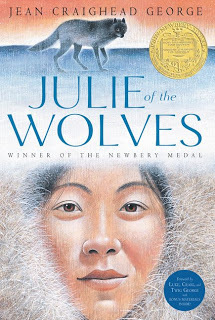







Published on September 22, 2018 19:16



